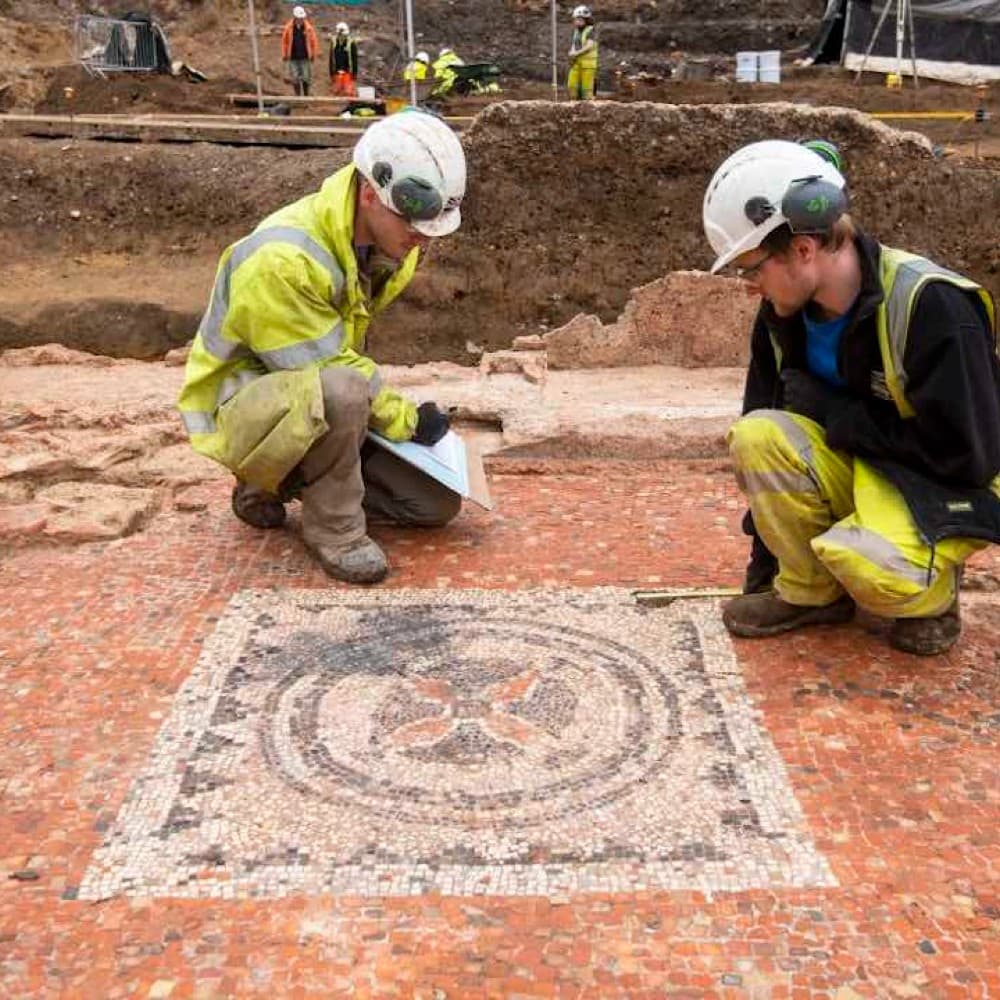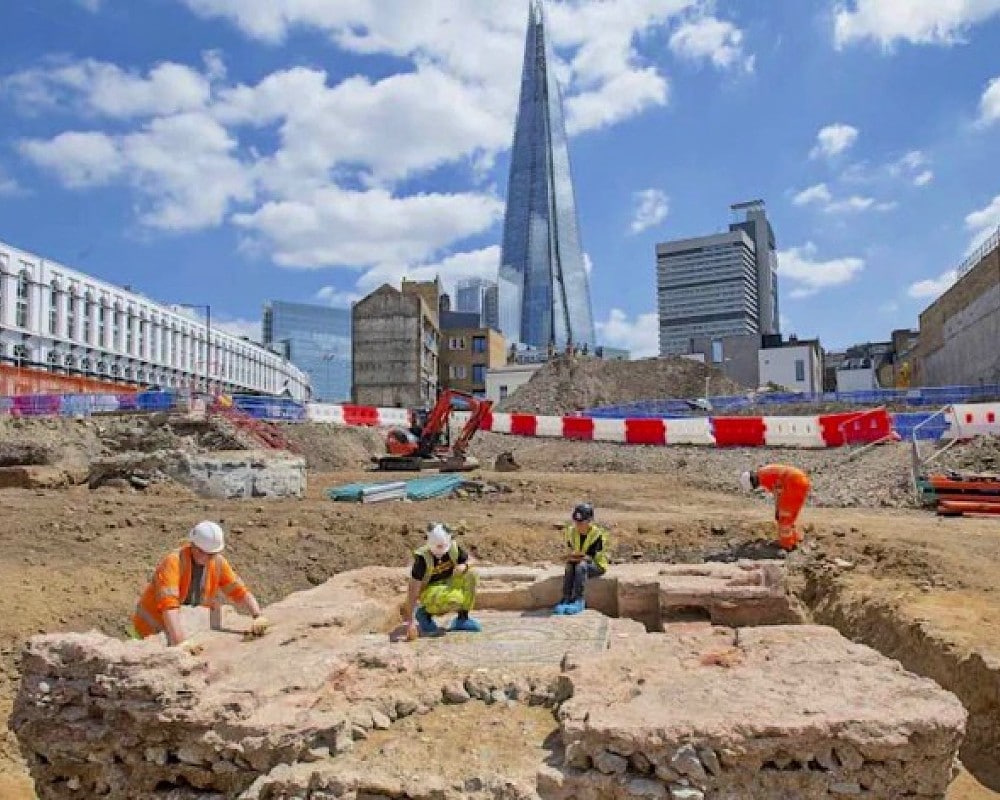
An extraordinary archaeological find has come to light during construction work in the vibrant Southwark borough of South London. It’s a Roman mausoleum boasting remarkably well-preserved mosaic flooring. The Museum of London Archaeology has confirmed that this Roman mausoleum is the most intact ever discovered in Britain, making it an incredibly rare and significant historical artifact excavated in Europe.
Unveiling Roman Treasures

Alongside the Roman mausoleum, the excavation yielded a fascinating array of artifacts, including pottery shards, roofing tiles, and coins. Notably, the site also revealed a collection of 80 Roman burials, likely utilized by the affluent residents of the city during ancient times. While no burial coffins were found, the absence of such remains does not diminish the significance of this discovery. Notably, this area of Southwark, located near popular tourist attractions such as Borough Market and London Bridge, has previously yielded other significant Roman treasures. These include a Roman sarcophagus displayed in 2017 and a splendid intact mosaic found in 2018. The mosaic was particularly noteworthy, as it represented the largest mosaic ever found in London. Its decorative elements, featuring geometric, floral, and columnar motifs, bore striking resemblances to a mosaic discovered in the German city of Trier.
Preserving History
Catherine Rose, a councilor for the London Borough of Southwark, expressed her admiration for the rediscovery of this Roman mausoleum and its exquisite mosaics, emphasizing how it adds to the rich tapestry of the area’s past. The site is co-owned by Landsec Developers, who will now proceed with their construction plans after the completion of the excavations. The mausoleum will be meticulously restored to its best possible condition and eventually opened to the public for display, allowing visitors to marvel at this extraordinary testament to ancient Roman craftsmanship and heritage. This remarkable find offers a captivating glimpse into the ancient Roman presence in London and underscores the importance of preserving the diverse layers of history.